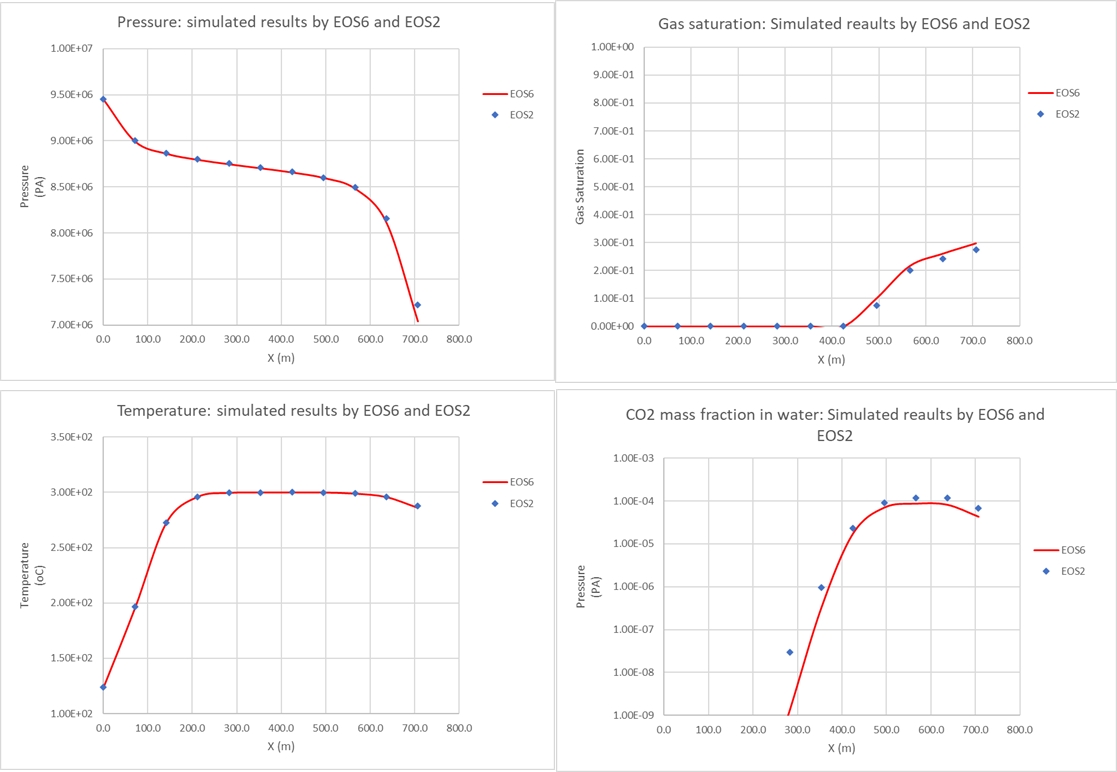Problem 1-Validation with EOS2
In geothermal reservoir development, production and injection wells are often sited in more or less regular geometric patterns. The present problem considers a large well field with wells arranged in a “five-spot” configuration (see Figure 10-n1). Because of symmetry, only 1/8 of the basic pattern needs to be modeled. The computational grid was generated by means of a separate preprocessor program which has not yet been integrated into the TOUGH4 package. The grid has six rows, each containing between one and eleven elements, for a total of thirty-six volume elements; for simplicity, only a single layer of 305 m thickness is modeled. The problem specifications as given in Figure 10-n2 correspond to conditions that may typically be encountered in deeper zones of hot and fairly tight fractured two-phase reservoirs (Pruess and Narasimhan, 1985).

This example models the system as a fractured medium with embedded impermeable matrix blocks in the shape of cubes. The matrix blocks were assigned a non-vanishing porosity of , so that they will contain a small amount of water. This has no noticeable impact on fluid and heat flows, and is done to prevent the water mass balance equation from degenerating into the singular form 0 = 0. Running the problem with in the matrix blocks (domain MATRX) is also possible, but this results in more sluggish convergence and considerably smaller time steps. The MESHMaker module is used to perform MINC-partitioning of the primary grid (partition type THRED with three equal fracture spacings). The first MINC continuum, corresponding to the fracture domain, occupies a volume fraction of 0.02 and has an intrinsic porosity of 50 %, for an effective fracture porosity of 1 %. By inserting an ENDCY record in front of the MESHM data block, the MINC process can be disabled and the problem can be run as an effective porous medium. A CO2 partial pressure of 5 bars is specified. Figure 10-n3 shows the comparison of the simulation results with EOS6 and EOS2..


Input Files
Input file for effective porous medium case.
Input files for MINC case.
Output Files
Output files for effective porous medium case.
Output files for MINC case.